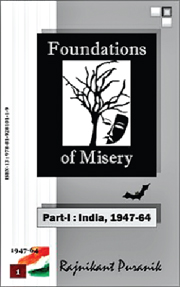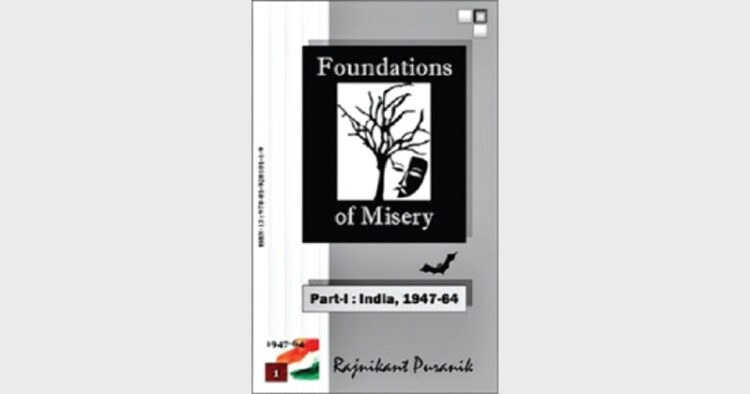Himalayan Misadventure: XII?
 There is much that is not commonly known about the shocking aspects of the 1962 India-China War, so shocking indeed that S Gopal, Nehru”s official biographer, was constrained to comment: “Things went so wrong that had they not happened it would have been difficult to believe them.” The Henderson-Brooks report covered only the limited aspects their authors were tasked with. The book “Foundations of Misery” by Rajnikant Puranik in its chapter “Himalayan Misadventure” details all the aspects of that avoidable war. We are serialising that chapter.
There is much that is not commonly known about the shocking aspects of the 1962 India-China War, so shocking indeed that S Gopal, Nehru”s official biographer, was constrained to comment: “Things went so wrong that had they not happened it would have been difficult to believe them.” The Henderson-Brooks report covered only the limited aspects their authors were tasked with. The book “Foundations of Misery” by Rajnikant Puranik in its chapter “Himalayan Misadventure” details all the aspects of that avoidable war. We are serialising that chapter.
That also required intelligence inputs on the Chinese preparedness, their strategy and their weaknesses and strengths. While it seems China had sufficient knowledge on India on all aspects relevant to winning war against it through its network of agents; India’s intelligence was woefully poor.
Had a proper plan been in place, surely the usage of air-force in case of inability to resist China on land would have been factored in. But, that was not done. Also, because India had inadequate inputs on the Chinese air-force strength. Why weren’t the various war-scenarios discussed threadbare well in advance of the actual commencement of the war, as part of the planning? Why were we so wanting in the very basics of war?
Air Chief Marshal NAK Browne said in October 2012 that had the IAF been allowed in an offensive role, the outcome of the 1962 war would have been different. However, IAF’s role was confined only to providing transportation to the Army. Even former Air vice Marshal AK Tewary had opined that India could have defeated China in the 1962 war had its air force been used. He mentioned that the then political–bureaucratic combine—we shall later take up Nehru’s SOS to the US—sought the help of the US Air Force without even consulting the IAF leadership. As per the official history, no notings or documents are available to explain the decision to forego the use of offensive air support.
The Rout
Even though there were clashes with the Chinese in September 1962, both Nehru and Krishna Menon felt the same were not serious enough, and both went ahead on their respective foreign tours!
12 October 1962. In response to a reporter’s query, Nehru grandly declared at the airport on 12 October 1962 on his way to Ceylon [Sri Lanka] that he had instructed the Army to “evict the Chinese”! In its jingoism, the press lapped up the comment. Even foreign newspapers reported it, some headlining the news to the effect that Nehru had declared war on China. The Chinese People’s Daily also reported it, advising Nehru to “pull back from the brink of the precipice, and don’t use the lives of Indian troops as stakes in your gamble.”
The question is: Does one give operational orders publicly? It amounted to declaring war, and giving Chinese the excuse to retaliate.
And, to issue such orders without any preparation!
Later, when China struck on 20 October 1962, both in Ladakh and across the McMahon Line, and ran through India’s forward positions, all were stunned.
20 October 1962. This is from the book, Himalayan Blunder, by Brigadier JP Dalvi, an eyewitness, and an actual participant in the war: “At 5 on the morning of 20th October 1962 massed Chinese artillery opened up a heavy concentration on the weak Indian garrison, in a narrow sector of the Namka Chu Valley…Massive infantry assaults followed, and within three hours the unequal contest was over. The route to the plains of Assam lay wide open. The Chinese exploited their initial successes and advanced 160 miles into Indian Territory… reaching the Brahmaputra Valley by 20th November. They swept aside the so-called impregnable defences of Sela Pass; Bomdilla was literally overrun; the monastery town of Towang fell without a fight. India’s panicky reaction included the scrambling of ill-equipped, ill-trained for mountain warfare and unacclimatised military formations…The Chinese were amazed at this…”
24 October 1962. China issued a statement and Zhou also wrote to Nehru setting out the terms of peaceful settlement of the border dispute: both parties withdraw 20km from the line of actual control and disengage; the PMs of the two countries engage in friendly settlement of the dispute. India questioned what China meant by the line of actual control and wanted it to be the position as on 8 September 1962, while China, in its response of 4 November 1962, clarified it to be the position as on 7 November 1959, that is, the McMahon Line in the eastern sector—even though China had not accepted that line—and the traditional line in the other sectors, emphasising what China offered met the India conditions of “decency, dignity and self respect” and would not prejudice claims of either parties, which would be settled through negotiations. This also meant that China was not taking advantage of the territories it had gained meanwhile after the hostilities of 20 October 1962.
-Rajnikant Puranik? (www.rkpbooks.com, www.facebook.com/fom.p1, rajnikantp.blogspot.in, twitter.com/Rajnikant_rkp, rkpuranik@gmail.com).
?













Comments